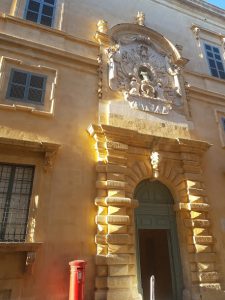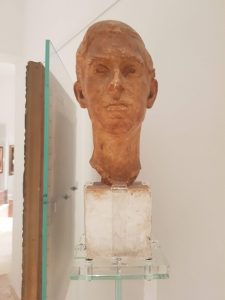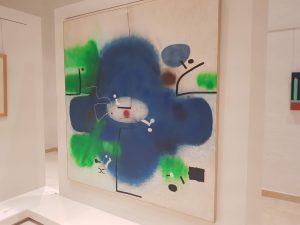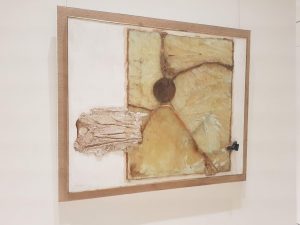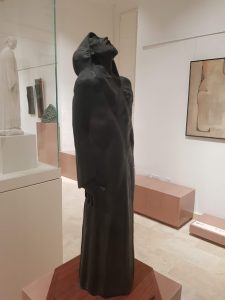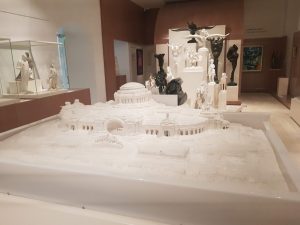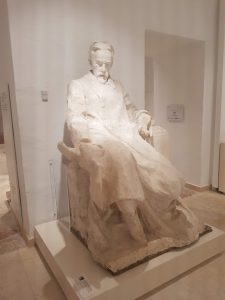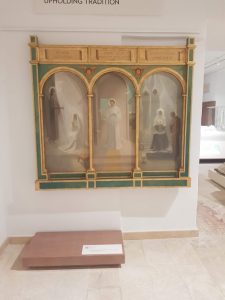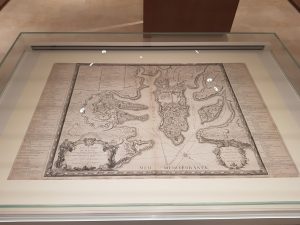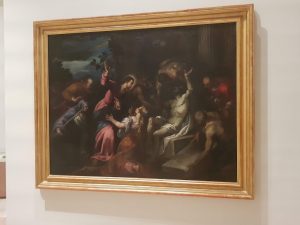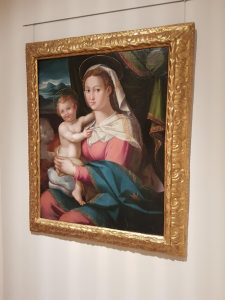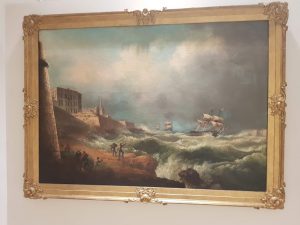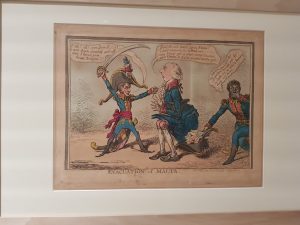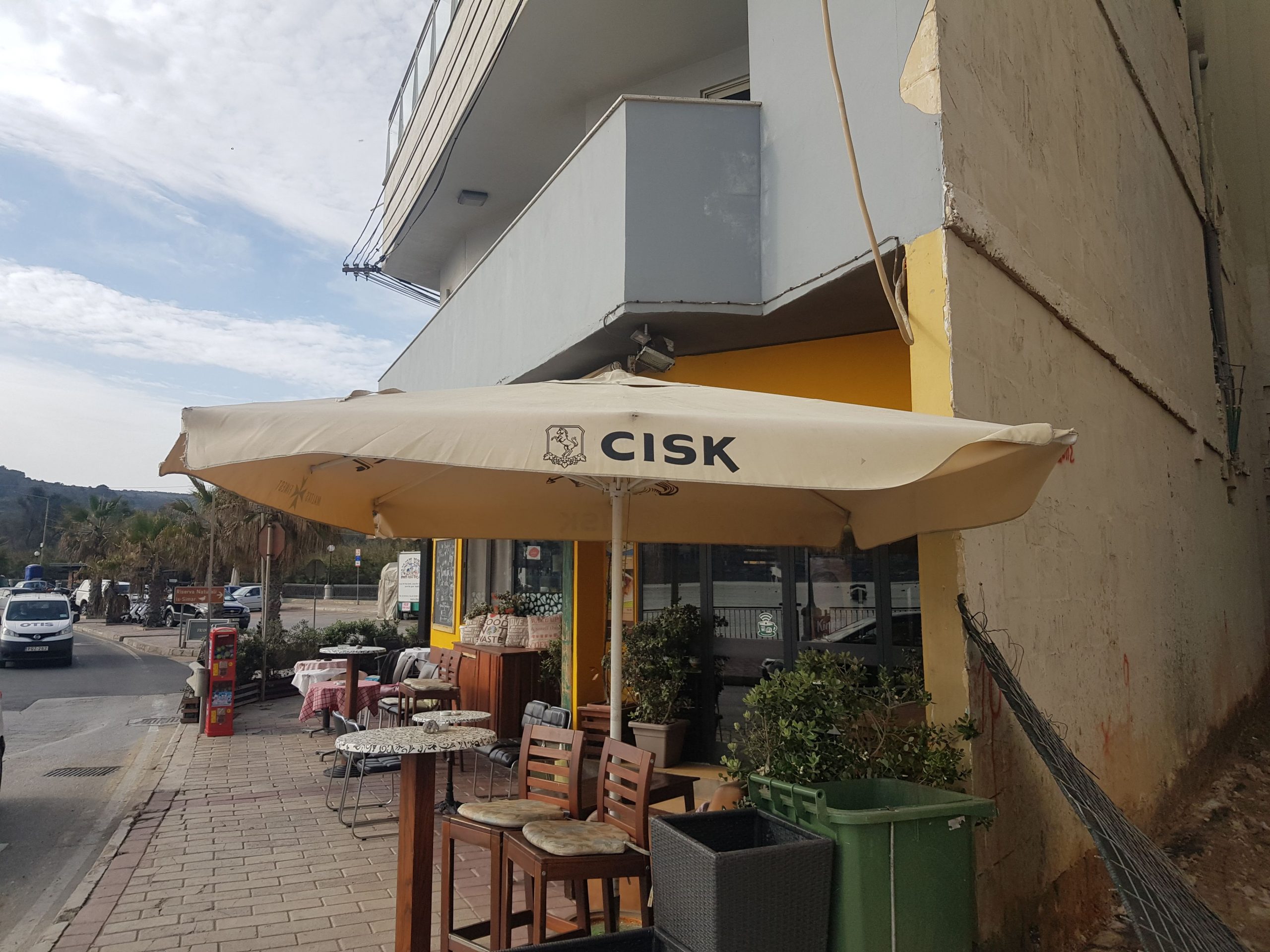Malta – South Eastern Region – Valletta – Muza
Muza is the new art museum in Valletta which relocated and opened in its current location at the end of 2018. My visit came just a couple of weeks after they opened, so everything seemed quite new and modern. Although I didn’t like the stairs inside the building, but I mentioned them elsewhere….
The gallery has been opened in the Auberge d’Italie building which dates back to the late sixteenth century. Over the centuries the building has been used as a Post Office, a school of arts, a courthouse and a military headquarters.
The signage in the museum isn’t really very good, although I’m sure that they’re planning to address this. I had a Heritage Malta pass so I didn’t go to the ticket office and instead headed to what I thought was the entrance so that they could scan my ticket. That worked, but the museum seemed very small, but it transpired that I had just visited the temporary exhibition which is on the ground floor. Fortunately a staff member told me as I was leaving…..
Anyway, above is a plaster portrait of HRH the Prince of Wales, sculpted by Vincent Apap, one of the most famous Maltese sculptors in recent history.
This is the last artwork by Victor Pasmore and it was found on his easel when he died in 1998. The information panel explains that “it is a synthesis of his style in Malta, featuring simple forms, dynamic lines and symbols”. I haven’t got the slightest clue what the artwork, which is titled Bla Titlu (this actually means ‘without title’ in Maltese, so I suppose it isn’t really titled), is about.
This artwork is by the Maltese Emvin Cremona and is a mixed media piece created in 1969. I have absolutely no idea what this is supposed to be about, which was a theme I was discovering about this exhibition.
St. Anthony the Abbot, a sculpture in plaster by Vincent Apap, one of his earlier works having been created in 1932.
This is the design created in 1917 by the Maltese sculptor Antonio Sciortino for a project to mark the unknown soldier. Despite many years of work the structure was never built.
Another work by Antonio Sciortino, this one is a model for a monument of Anton Chekhov, which was in this case constructed.
I like medieval triptychs, but this is a contemporary interpretation which was created in 1945 by the Maltese artist Anton Inglott.
Everything above was in the temporary exhibition, so I then made my way up the stairs to the main collection. The museum was surprisingly quiet, although it was also much larger than I had anticipated. There were gaps where signs and panels should be, but I assume that this is simply because the museum has just opened and they weren’t quite ready.
An early map of Valletta.
This is the ‘Raising of Lazarus’ which was painted in the late sixteenth century by the Italian artist Andrea Vicentino. Of note is that this is one of the few works which has survived which was once hung in the Grandmaster’s Palace.
This painting of ‘Madonna and Child’ looks older to me, but is actually from the late nineteenth century, although the painter is unknown.
One of my favourite works in the gallery, this is a view of the Grand Harbour’s entrance, painted in oils in the early nineteenth century by Thomas Lyde Hornbrook.
An interesting cartoon from 1803 representing the evacuation of Malta.
Overall, I liked this museum and the design felt contemporary and modern, befitting the new building. I also very much liked that there were numerous information panels relating to the history of the building itself, which has gone through numerous transformations over the centuries. The layout was though just a little confusing and I hope no visitors manage to miss the main part of the museum and instead just see the downstairs exhibition area.

